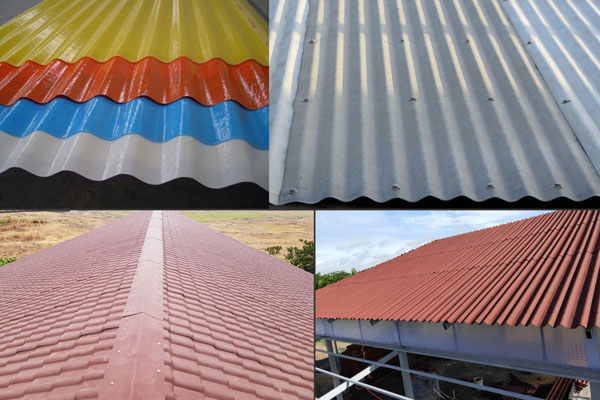Selecting the right roofing material is a crucial decision for homeowners, impacting the aesthetics, durability, and energy efficiency of their homes. With an array of options available in the market, navigating through the diverse landscape of Roofing Sheets Types can be overwhelming. In this comprehensive guide, we will explore the different roofing sheets types and materials, providing insights to help homeowners make informed decisions based on their unique preferences and requirements.
Understanding the Roofing Sheets Landscape
- Asphalt Shingles
Asphalt shingles are the most common and cost-effective roofing option. Composed of fiberglass or organic material coated with asphalt and mineral granules, these shingles offer a range of colors and styles. They are easy to install and provide good fire resistance.
- Metal Roofing Sheets
Metal roofing sheets, available in materials like steel, aluminum, and copper, are known for their durability and longevity. They are resistant to fire, mildew, and insects. Metal roofing sheets can be corrugated or standing seam, offering a sleek and modern appearance.
- Slate Tiles
Slate roofing sheets are natural stone tiles that add a touch of elegance to a home. While heavier and more expensive, slate is durable, fire-resistant, and boasts a distinctive appearance. It is often chosen for its longevity and natural beauty.
- Wood Shakes and Shingles
Wood shakes and shingles, typically made from cedar, redwood, or pine, provide a rustic and natural look to a home. While they require more maintenance and are susceptible to fire, they offer excellent insulation and a charming aesthetic.
- Concrete Tiles
Concrete roofing tiles are durable and versatile, available in various shapes and colors. They can mimic the appearance of other materials, such as slate or wood, providing homeowners with a cost-effective alternative that combines aesthetics with functionality.
Factors to Consider When Choosing Roofing Sheets
- Climate Considerations
The climate of your region plays a significant role in determining the ideal roofing material. For example, in areas prone to heavy rainfall, metal roofing sheets with proper coatings may be preferable, while in hot climates, materials with good heat resistance should be considered.
- Budget Constraints
Your budget is a critical factor in the decision-making process. Asphalt shingles are often the most budget-friendly option, while materials like slate and copper tend to be more expensive. Balancing cost with durability and aesthetics is key.
- Architectural Compatibility
Consider the architectural style of your home. Certain roofing materials may complement traditional styles, while others suit modern or eclectic designs. Choosing roofing sheets that align with your home’s architecture enhances its overall aesthetic appeal.
- Maintenance Requirements
Different roofing materials have varying maintenance needs. Wood shakes may require regular treatment to prevent decay, while metal roofing is low-maintenance. Assessing your willingness and ability to perform ongoing maintenance is crucial.
- Local Building Codes and Regulations
Check local building codes and regulations before making a decision. Some materials may be restricted in certain areas due to fire codes or other safety considerations. Ensuring compliance with local regulations is essential for a smooth installation process.
Advantages and Disadvantages of Roofing Sheets Types
- Asphalt Shingles
Advantages: Cost-effective, easy to install, versatile in style and color.
Disadvantages: Less durable compared to some other materials, shorter lifespan.
- Metal Roofing Sheets
Advantages: Durable, long lifespan, energy-efficient, recyclable.
Disadvantages: Higher upfront cost, can be noisy in heavy rain or hail.
- Slate Tiles
Advantages: Longevity, natural beauty, fire-resistant.
Disadvantages: Heavy, expensive, requires professional installation.
- Wood Shakes and Shingles
Advantages: Natural appearance, good insulation.
Disadvantages: High maintenance, susceptibility to fire and decay.
- Concrete Tiles
Advantages: Durable, versatile, can mimic other materials.
Disadvantages: Heavy, may require additional roof support, can be prone to cracking.
Conclusion:
The process of choosing the right roofing sheets involves a careful consideration of various factors, including the climate of your region, budget constraints, architectural compatibility, maintenance requirements, and local building codes. Each roofing material has its own set of advantages and disadvantages, and understanding these can guide homeowners toward the best choice for their unique needs.
Whether opting for the affordability of asphalt shingles, the durability of metal roofing sheets, the natural beauty of slate tiles, the rustic charm of wood shakes, or the versatility of concrete tiles, homeowners can find a roofing solution that aligns with their preferences and practical considerations. The key is to strike a balance between functionality, aesthetics, and budget, ensuring a roofing investment that enhances both the structural integrity and visual appeal of the home.


